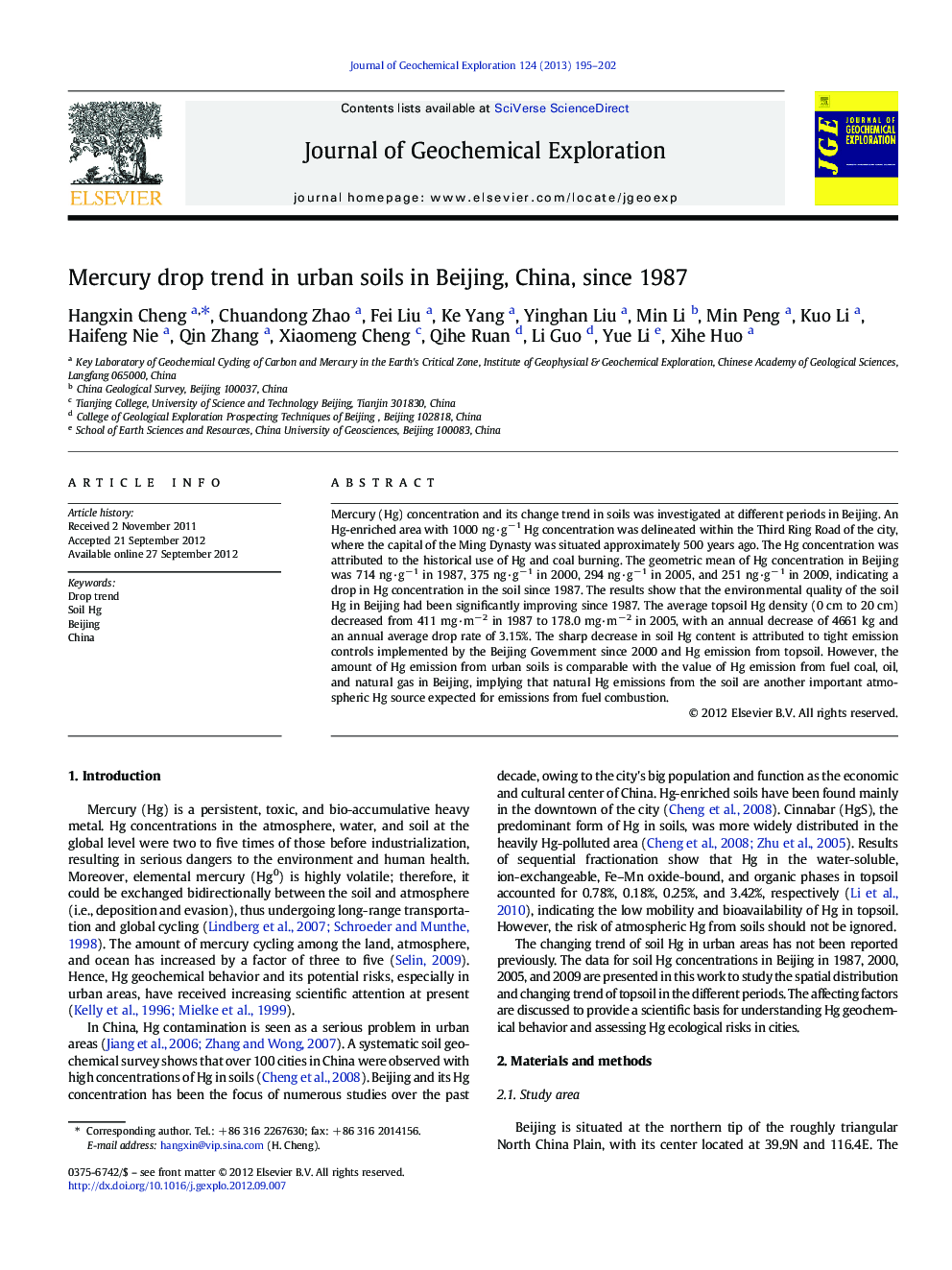| Article ID | Journal | Published Year | Pages | File Type |
|---|---|---|---|---|
| 4457692 | Journal of Geochemical Exploration | 2013 | 8 Pages |
Mercury (Hg) concentration and its change trend in soils was investigated at different periods in Beijing. An Hg-enriched area with 1000 ng·g− 1 Hg concentration was delineated within the Third Ring Road of the city, where the capital of the Ming Dynasty was situated approximately 500 years ago. The Hg concentration was attributed to the historical use of Hg and coal burning. The geometric mean of Hg concentration in Beijing was 714 ng·g− 1 in 1987, 375 ng·g− 1 in 2000, 294 ng·g− 1 in 2005, and 251 ng·g− 1 in 2009, indicating a drop in Hg concentration in the soil since 1987. The results show that the environmental quality of the soil Hg in Beijing had been significantly improving since 1987. The average topsoil Hg density (0 cm to 20 cm) decreased from 411 mg·m− 2 in 1987 to 178.0 mg·m− 2 in 2005, with an annual decrease of 4661 kg and an annual average drop rate of 3.15%. The sharp decrease in soil Hg content is attributed to tight emission controls implemented by the Beijing Government since 2000 and Hg emission from topsoil. However, the amount of Hg emission from urban soils is comparable with the value of Hg emission from fuel coal, oil, and natural gas in Beijing, implying that natural Hg emissions from the soil are another important atmospheric Hg source expected for emissions from fuel combustion.
► Systematic soil geochemical surveys in different periods were firstly surveyed. ► Mercury drop trend in urban soils was observed in Beijing since 1987. ► The annual mercury emission from soil is calculated. ► The natural Hg emissions from the soil are another important atmospheric Hg source.
